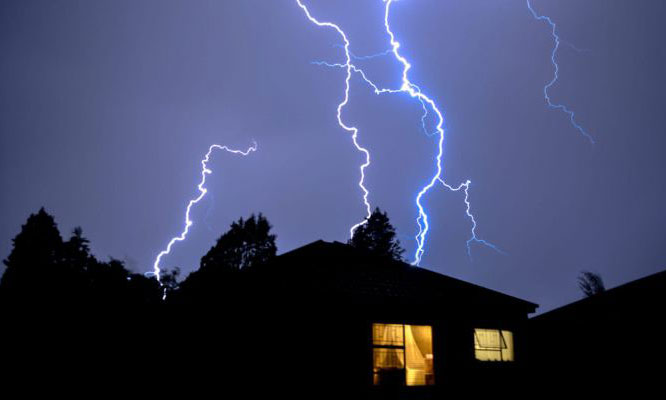Last Saturday afternoon I was at the Hawthorne cinema with my four children when we heard the most deafening clap of thunder. Rain began to pour down so heavily we could barely hear the movie. Yes, storm season has arrived! Do I have my emergency survival kit ready? I thought to myself.
We left the cinema an hour later to find trees lying across the road and many houses without power. Then our emergency line started ringing off the hook. One apartment building in our suburb of Coorparoo had been struck by lightning and had no power. The owner was worried as the had not prepared an emergency survival kit. Another client also had no power, although all her neighbours did. She needed help. It got me thinking, is my home really prepared for a Brisbane storm season? Here are some simple things you can implement to ensure the safety of your family before the next storm hits, including how to prepare your storm survival kit.
What to do in the lead up to storm season, including what to put in your emergency survival kit.
- Check your insurance policy, make sure it is up to date and find out exactly what is covered.
- Prepare an Emergency Safety Plan containing exit points, meeting point, contact methods, requirements for medical conditions, what to do with pets.
- Create an Emergency Survival Kit containing portable radio, torch, first aid kit, essential medication.
- Remove Tree branches and debris from around the house. You do not want any missiles created out of household items.
- Install surge protection. A power surge caused by a lightning strike or downed power line can destroy modern appliances. You can buy surge protectors at a hardware store which protect individual electrical items. However if you are serious about protecting your home from power surges, a qualified electrician can mount a surge arrestor to your switchboard to protect all of your electrical equipment.
- Test your safety switch. Safety switches greatly minimise the risk of electrical shocks and are designed to prevent injury and death.
We often get phone calls from woman after heavy rain or storm asking for help because they have no power. Often they are on their own or their husband is away and they are scared and unsure of where their switchboard is let alone what a safety switch looks like. If you are unsure of how to test your safety switch, watch my short video on how to locate your safety switch and test it, so that next time yours goes out you will feel more confident in what to do.
What to do during a Storm
- Unplug electrical items. Even an electrical strike near a power line is enough to induce a surge and push household power beyond the 230 volts most household receive causing serious harm to electrical equipment if it is left plugged in.
- Do not use a fixed telephone. About 80 lightning strikes happen each year due to people using fixed telephones during lightning storms. Telephone lines become highly charged near where lightning is striking.
- Check the BOM (Bureau of Meteorology), Listen to local radio for warnings and updates and have emergency numbers handy. SES 132 500.
The Safest Place to be during a storm.
- Stay away from floods and fallen power lines.
- Get indoors! Run to the nearest building or hardtop car. Do not stand under a tree, lightning is attracted to tall, isolated objects. Standing under a tree is the second leading cause of lightning casualties.
- Inside is a safe place to be ensuring you stay away from anything that conducts electricity and stay away from all windows.
Rain and lightning can cause your RCD (Safety Switch) to trip. Read more about RCD Protection.


